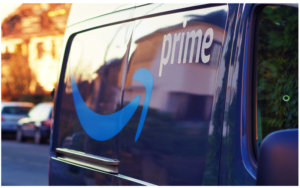In the fast-paced world of social media, staying organized and consistent can be a challenge. Whether you’re a small business owner, a marketer, or an influencer, a well-structured social media content calendar is essential for managing your online presence effectively. This guide will provide you with a comprehensive overview of how to create a content calendar that not only streamlines your posting schedule but also enhances your overall social media strategy.
What is a Social Media Content Calendar?
A social media content calendar is a strategic tool that helps you plan, schedule, and organize your social media posts across various platforms. It acts as a roadmap for your content strategy, ensuring that you maintain a consistent posting schedule, align your content with marketing goals, and engage effectively with your audience.
Benefits of a Social Media Content Calendar
- Consistency: Regular posting is crucial for keeping your audience engaged. A content calendar helps you maintain a steady flow of content, which is key to building brand loyalty and trust.
- Organization: With a content calendar, you can visualize your content strategy and manage your posts more effectively. This reduces the chaos of last-minute content creation and helps you stay on track.
- Strategic Planning: A calendar allows you to plan content around key dates, holidays, events, or product launches, ensuring that your posts are timely and relevant.
- Time Management: By scheduling posts in advance, you can save time and reduce stress. This allows you to focus on creating high-quality content rather than scrambling to post at the last minute.
- Performance Tracking: A content calendar enables you to monitor the performance of your posts over time, helping you identify trends and adjust your strategy accordingly.
Steps to Create Your Social Media Content Calendar
Step 1: Define Your Goals
Before diving into the logistics of your content calendar, take a moment to define your social media goals. What do you want to achieve? Common objectives include:
- Increasing brand awareness
- Driving traffic to your website
- Generating leads or sales
- Boosting engagement (likes, shares, comments)
- Building a community around your brand
Having clear goals will guide your content decisions and help you measure success.
Step 2: Identify Your Target Audience
Understanding your audience is crucial for creating content that resonates. Consider the following factors:
- Demographics: Age, gender, location, and interests.
- Pain Points: What challenges does your audience face that your content can address?
- Content Preferences: What types of content does your audience engage with most? (e.g., videos, blog posts, infographics)
Creating audience personas can help you visualize and understand your target demographic better.
Step 3: Choose Your Platforms
Not all social media platforms are created equal, and each has its unique audience and style. Identify which platforms are most relevant to your audience and focus your efforts there. Common platforms include:
- Facebook: Great for community building and sharing a mix of content types.
- Instagram: Ideal for visual content, including photos and stories.
- Twitter: Best for real-time updates and engaging in conversations.
- LinkedIn: Perfect for B2B marketing and professional networking.
- TikTok: A growing platform for creative, short-form video content.
Step 4: Determine Your Content Types
Variety is key to keeping your audience engaged. Consider a mix of content types, such as:
- Educational Content: Blog posts, how-to guides, and tutorials that provide value.
- Promotional Content: Announcements about new products, sales, or events.
- Engaging Content: Polls, quizzes, and user-generated content that encourage interaction.
- Visual Content: Infographics, videos, and images that capture attention.
- Behind-the-Scenes Content: Showcasing your team, processes, or company culture.
Step 5: Create a Posting Schedule
Decide how often you want to post on each platform. This could be daily, several times a week, or weekly, depending on your audience and resources. Consistency is key, so choose a schedule that you can realistically maintain. Here’s a general guideline:
- Facebook: 1-2 posts per day
- Instagram: 1-3 posts per day, plus stories
- Twitter: 3-5 tweets per day
- LinkedIn: 1 post per day
- TikTok: 1-2 videos per day
Step 6: Use a Template
Utilize a content calendar template to organize your ideas. You can create a simple spreadsheet or use tools like Google Calendar, Trello, or dedicated social media management tools like Hootsuite, Buffer, or CoSchedule. A basic template should include:
- Date: When the post will go live
- Platform: Where the post will be published
- Content Type: The format of the post (e.g., image, video, blog link)
- Post Copy: The text that will accompany the post
- Links/Images: Any relevant links or images to be included
- Status: A column to track whether the post is planned, scheduled, or published
Step 7: Plan Ahead
Aim to plan your content at least a month in advance. This allows you to align your posts with upcoming events, holidays, or product launches. Regularly review and adjust your calendar based on performance and audience feedback. Consider creating themed content for specific months or seasons to keep your posts fresh and relevant.
Step 8: Monitor and Adjust
Once your content is live, track its performance using analytics tools. Pay attention to metrics such as engagement rates, reach, and conversions. This data will help you identify what types of content resonate most with your audience and allow you to adjust your strategy accordingly. Don’t be afraid to experiment with different content types and posting times to see what works best.
Step 9: Engage with Your Audience
A content calendar is not just about posting; it’s also about engagement. Make sure to allocate time to respond to comments, messages, and mentions. Engaging with your audience fosters a sense of community and encourages further interaction with your content.
Step 10: Review and Revise Regularly
Social media trends and audience preferences can change rapidly. Schedule regular reviews of your content calendar (monthly or quarterly) to assess what’s working and what isn’t. Use this time to brainstorm new content ideas, adjust your posting frequency, and refine your overall strategy.
Conclusion
Building a social media content calendar may seem daunting at first, but with a clear plan and the right tools, it can become an invaluable asset to your social media strategy. By staying organized and proactive, you can create engaging content that resonates with your audience and drives your goals forward. Start crafting your content calendar today, and watch your social media presence thrive!

Free Assessment
Discover in just 30 minutes how our tailored social media and digital marketing strategies can elevate your brand awareness, synchronize your marketing and sales efforts, and reliably generate new leads, customers, and revenue streams.




